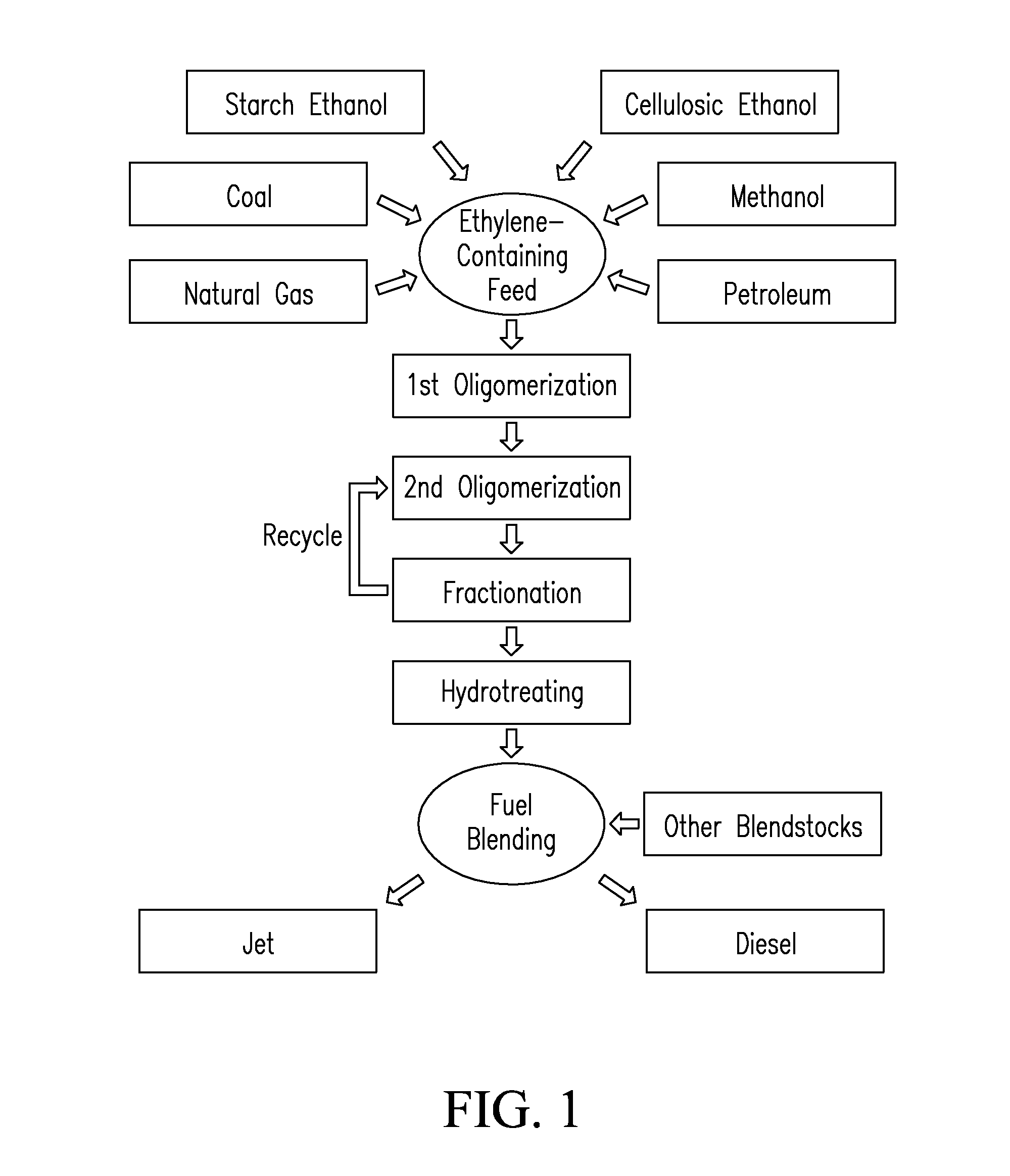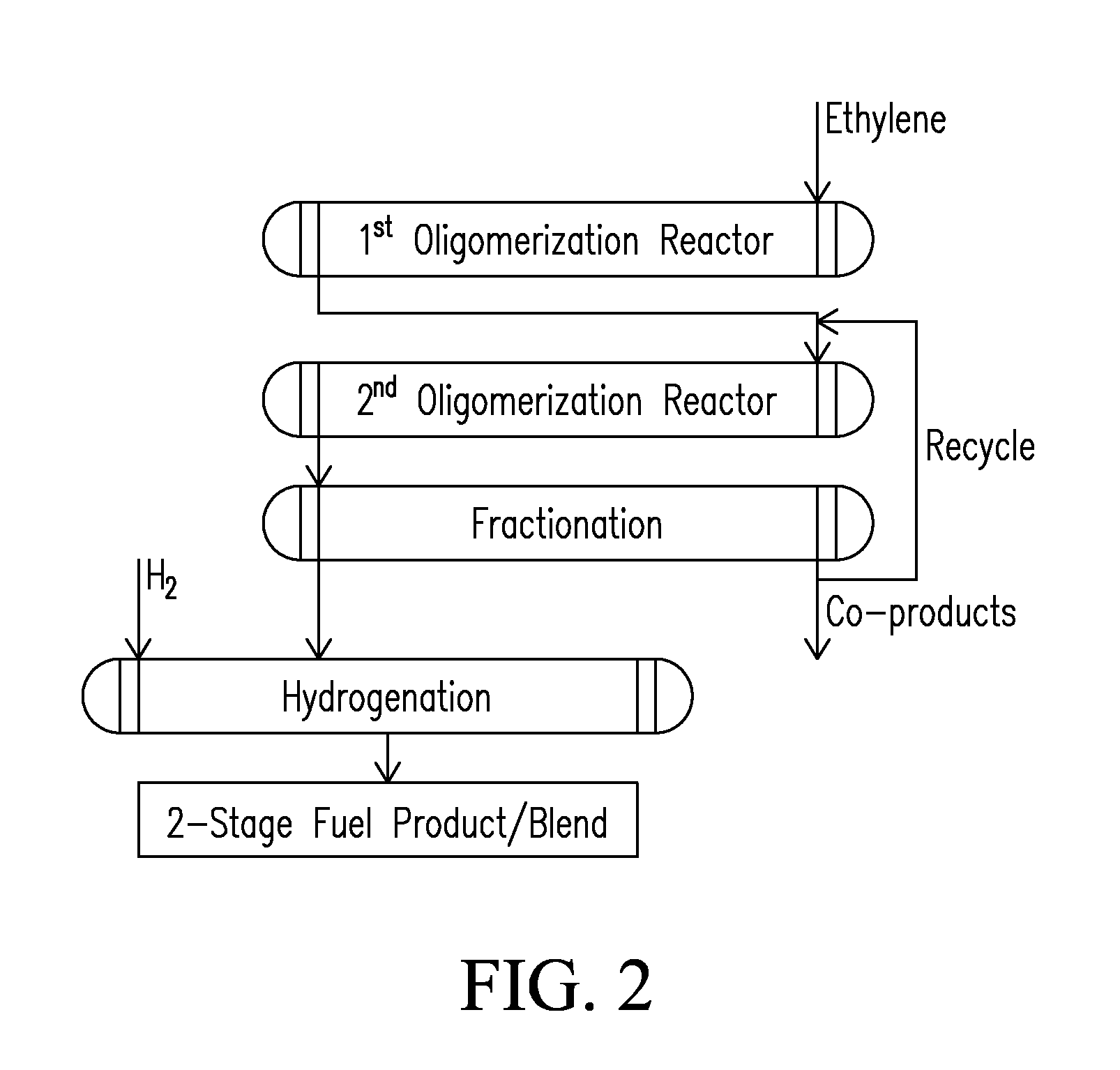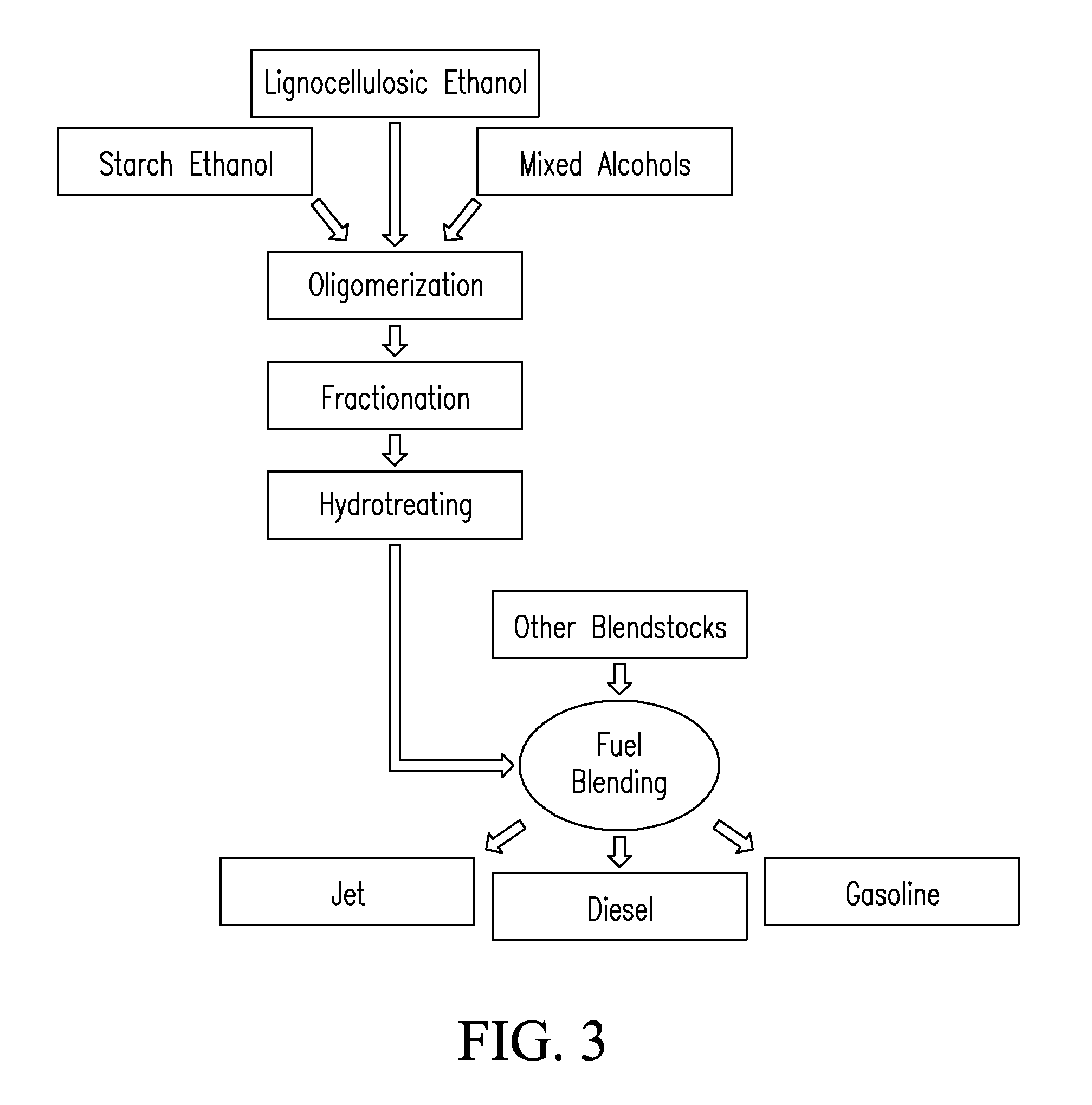Systems and processes for conversion of ethylene feedstocks to hydrocarbon fuels
a technology of hydrocarbon fuel and feedstock, which is applied in the direction of hydrocarbon preparation catalysts, metal/metal-oxide/metal-hydroxide catalysts, chemical production, etc., can solve the problems of many conventional methods for producing alternative fuels such as from biomass feedstocks that cannot meet these requirements, and oxygenated hydrocarbons are precluded from being used in jet fuels. , to achieve the effect of high ethylene conversion, high product selectivity and easy recycling
- Summary
- Abstract
- Description
- Claims
- Application Information
AI Technical Summary
Benefits of technology
Problems solved by technology
Method used
Image
Examples
example 1
Preparation of First Oligomerization Catalyst
[0116]2.96 g of boehmite-alumina powder (e.g., Catalog #23N4-80 DISPAL® boehmite-alumina powder, Sasol Ltd., Houston, Tex., USA) was mixed with 5.0 g of solid NaOH pellets with enough deionized water to make a 250 mL solution. The solution was stirred and heated to 50-70° C. for 2.5 hr until solids were dissolved. The hot solution was rapidly added to a mixture of 300.05 g of sodium silicate solution (e.g., 26 wt % SiO2, Sigma-Aldrich, St. Louis, Mo., USA) and 1085.15 g of deionized water and stirred for about 5 minutes. 430 mL of a 1.4 M nitric acid solution was then added, which formed a gel. The gel was stirred at room temperature for 3 days to age the gel. The aged gel was then separated from the supernatant via centrifugation. Centrifuged solids were re-slurried in about 1.5 L of deionized water, heated to 60-70° C., and agitated for at least 1.5 hr. The centrifugation, re-slurry, and agitation cycle was repeated three more times. Th...
example 2
Preparation of First Oligomerization Catalyst
[0117]20.00 g of a beta zeolite powder (e.g., Catalog #CP814-C, Zeolyst International, Malvern, Pa., USA) was mixed with about 200 mL of a solution containing 4.28 g of anhydrous NiCl2 dissolved in deionized water. The mixture was stirred vigorously and heated to reflux overnight. After cooling, supernatant was decanted from the settled solids. Solids were transferred to a Millipore® filter with a 0.6 μm disc, slurried, and filtered several times with about 200 mL of hot deionized water, and dried overnight at 60° C. After drying, the material was heated from room temperature to 550° C. in flowing air and held for 2 hr at 550° C. to calcine and pelletize the material. Pellets were then returned to ambient temperature at a rate of 10° C. / min. Pellets were ground and then sieved through a −35 / +80 mesh filter and collected.
example 3
Preparation of First Oligomerization Catalyst
[0118]20.00 g of a Si—Al powder (e.g., Davicat SIAL 3111 powder, W.R. Grace & Co., Columbia, Md., USA) was mixed with about 200 mL of a solution containing 13.22 g of anhydrous NiCl2 dissolved in deionized water. The mixture was stirred vigorously and heated to reflux overnight in a flask. Upon cooling, contents of the flask were washed into a Millipore® filter with a 0.6 μm disc with deionized water, slurried, and filtered 12 times with about 150 mL of hot deionized water, and then dried overnight at 60° C. After drying, material was pelletized, ground, and sieved through a −35 / +100 mesh filter and collected.
PUM
| Property | Measurement | Unit |
|---|---|---|
| temperature | aaaaa | aaaaa |
| temperature | aaaaa | aaaaa |
| temperature | aaaaa | aaaaa |
Abstract
Description
Claims
Application Information
 Login to View More
Login to View More - R&D
- Intellectual Property
- Life Sciences
- Materials
- Tech Scout
- Unparalleled Data Quality
- Higher Quality Content
- 60% Fewer Hallucinations
Browse by: Latest US Patents, China's latest patents, Technical Efficacy Thesaurus, Application Domain, Technology Topic, Popular Technical Reports.
© 2025 PatSnap. All rights reserved.Legal|Privacy policy|Modern Slavery Act Transparency Statement|Sitemap|About US| Contact US: help@patsnap.com



